KATHMANDU: What goes on at Earth’s highest mountain doesn’t just stay there anymore — all of it gets shared and provides valuable insights to envision a sustainable planetary future, thanks to the Perpetual Planet Everest Expedition 2019 and a subsequent 2022 quest.
National Geographic Society and Rolex-backed Perpetual Planet Everest Expedition 2019 has been a trailblazer in several respects; but what stands out and stands atop the world’s highest peak these days is an automatic weather station.
The scientific equipment provides near real-time meteorological data useful in deciphering a host of climatological processes ongoing at the extreme altitude, apart from direct in-situ measurements of weather variables.
Precise and real-time readings of wind speed, temperature, humidity, and pressure conditions for varying altitudes on Mount Everest, including near-summit Bishop Rock (8,810m), are available at https://everest-pwa.nationalgeographic.org for different times of each day.
A feat – unachieved or unthought-of prior to the expedition.
A network of five automatic weather stations was installed during the first expedition in 2019. The installations took place at Phortse (3,810m), Base Camp (5,315m), Camp II (6,464m), South Col (7,945m) and Balcony (8,430m).
Additionally, the 2019 expedition also retrieved the world’s highest ice core from the world’s highest glacier system — South Col Glacier (8020m) — to study the gain/loss of the glacial ice and snow.
Importantly, the scientific team also obtained direct readings of solar radiations at extreme elevations.
The first expedition placed two of the world’s highest meteorological stations at South Col (7,945m) and the Balcony (8,430m) of Everest. Building on this, the second expedition in 2022 shifted the Balcony station (8,430m) to an even higher elevation at Bishop Rock (8,810m).
As of this minute of writing (2022-06-26 14:45 Nepal time), the wind blew at the rate of 3.1 meter/second at Bishop Rock (8,810m), the temperature there is -8.8°C, humidity registered at 72.5% and pressure measured 343.5hPa.
This information makes a life and death difference to anyone planning to scale Everest or someone who already is either at South Col (7900m) or the Balcony (8,430m) and preparing for the ultimate push to the summit (8,849m).
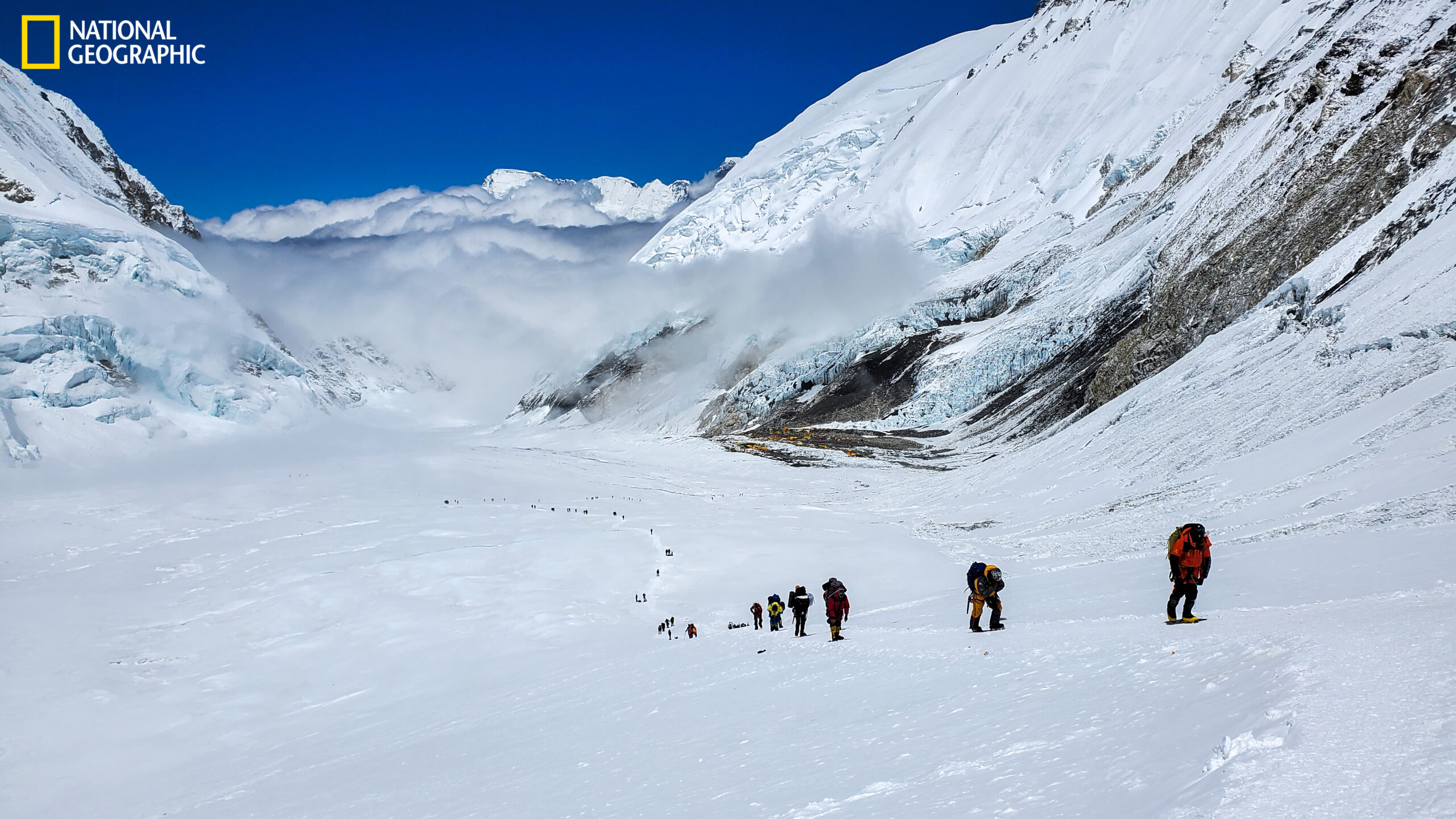
Mountaineer Tenzing Gyalzen Sherpa, a key member of Perpetual Planet Everest expeditions, experienced the difference first-hand. He witnessed that the data from the weather stations made a huge difference in the course of navigating the treacherous environmental conditions on Everest.
He has already climbed Everest thrice as part of the National Geographic and Rolex-backed Everest expeditions since 2019 and is far more acquainted with the integrated system of components placed along the elevation range on Everest.
Exuding confidence in the system, he said, “I will climb the mountain blindfolded when provided with data from the stations.” He added that the stations, however, would not provide data for the next day but assured real-time data-bearing extreme accuracy.
“Besides us (climbers), the weather stations will prove far more valuable to pilots leading rescue missions as one can know the exact conditions such as wind speed, humidity, among others, during such times,” he said. One can also avert calamities such as adverse storms and avalanches on the mountain.
Undoubtedly, the equipment installed has enabled multitudes of life-saving implications and, among other things, it is certain to make a sea change of difference to climbing and rescue expeditions from now onwards.

Professor Dr. Baker Perry, Department of Geography and Planning, Appalachian State University, the US, and Dr. Tom Matthews, Department of Geography and Environmental, Loughborough University, the UK, led the Perpetual Planet Everest expeditions in 2019 and 2022.
National Geographic and Rolex brought together a mix of scientists from wide-ranging disciplines (biology, geology, glaciology, meteorology, geography, cartography, among others), resilient Sherpas climbers, Nepali authorities and Nepal’s oldest university to this one-of-its-kind comprehensive scientific endeavor of exploring the extreme altitude environment in an attempt to demystify the past, present and future of the Himalayas and beyond.
Dr. Perry told Khabarhub that the objectives of the 2022 expedition were to conduct essential maintenance on the weather stations installed in 2019; replace two upper stations at South Col and Balcony; and continue building partnerships with Nepali authorities {Department of Hydrology and Meteorology (DHM)}.
The expeditions surely did not have the easiest tasks in the world. Even on a rare postcard day on Everest: temperature inclines to plummet; atmospheric pressure is forever low; oxygen concentration in the air goes scarce; cosmic radiations tend to intensify, and chilly and powerful streams of winds roar and dominate.
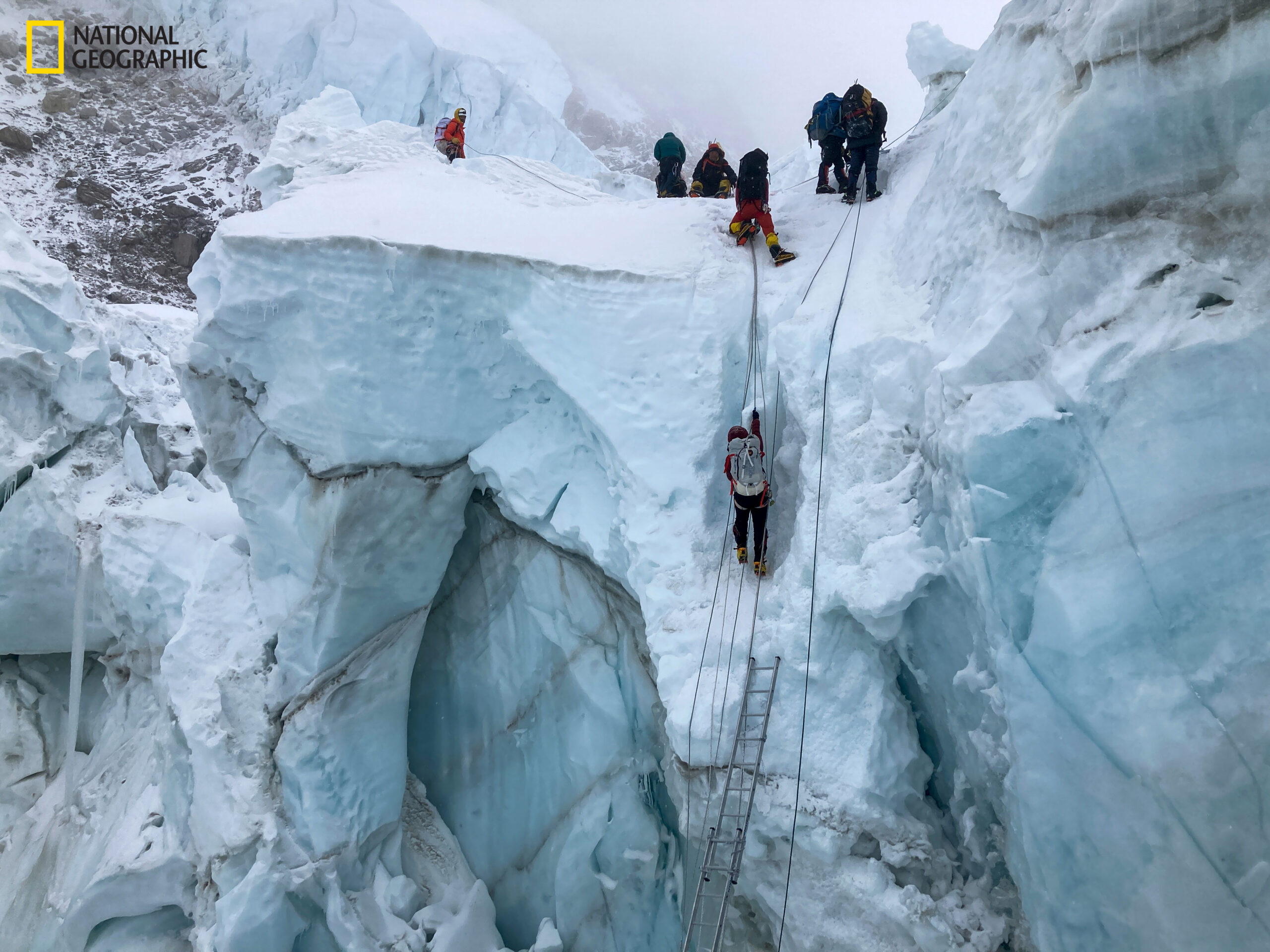
The challenges were astounding even before the ascent. The extreme altitudes were not going to be generous even to scientific endeavors such as these expeditions.
Nevertheless, the expeditions pivoted against all odds as skillful and enduring navigators, mountain-dwelling Sherpas, formed an integral part of the team.
Dr. Perry largely attributed the bulk of the expeditions’ success to trained Sherpas climbers, who guided and traveled together with the scientific crew in the team.
“Tenzing Gyalzen, especially, was our Sardar,” said Dr. Perry. “He worked with us for the last three years and built his capacity to really work on these stations, and maintain the higher stations.”
“Of course, the Sherpa team carried the big loads but they are also the ones who installed the world’s highest weather station at Bishop Rock (8,810m). They did 99 percent of the work on these expeditions,” added Dr. Perry.
Arbrinda Khadka, the sole Nepali member representing the scientific crew in the 2022 expedition on Everest, said it took the team over three hours to install a new and improved weather station at Bishop Rock (8,810m).
Khadka and Dr. Matthews were the only two members representing the scientific community at Bishop Rock (8,810m) as Tenzing Gyalzen and other Sherpas installed the weather station about 40 vertical meters below Everest’s summit.
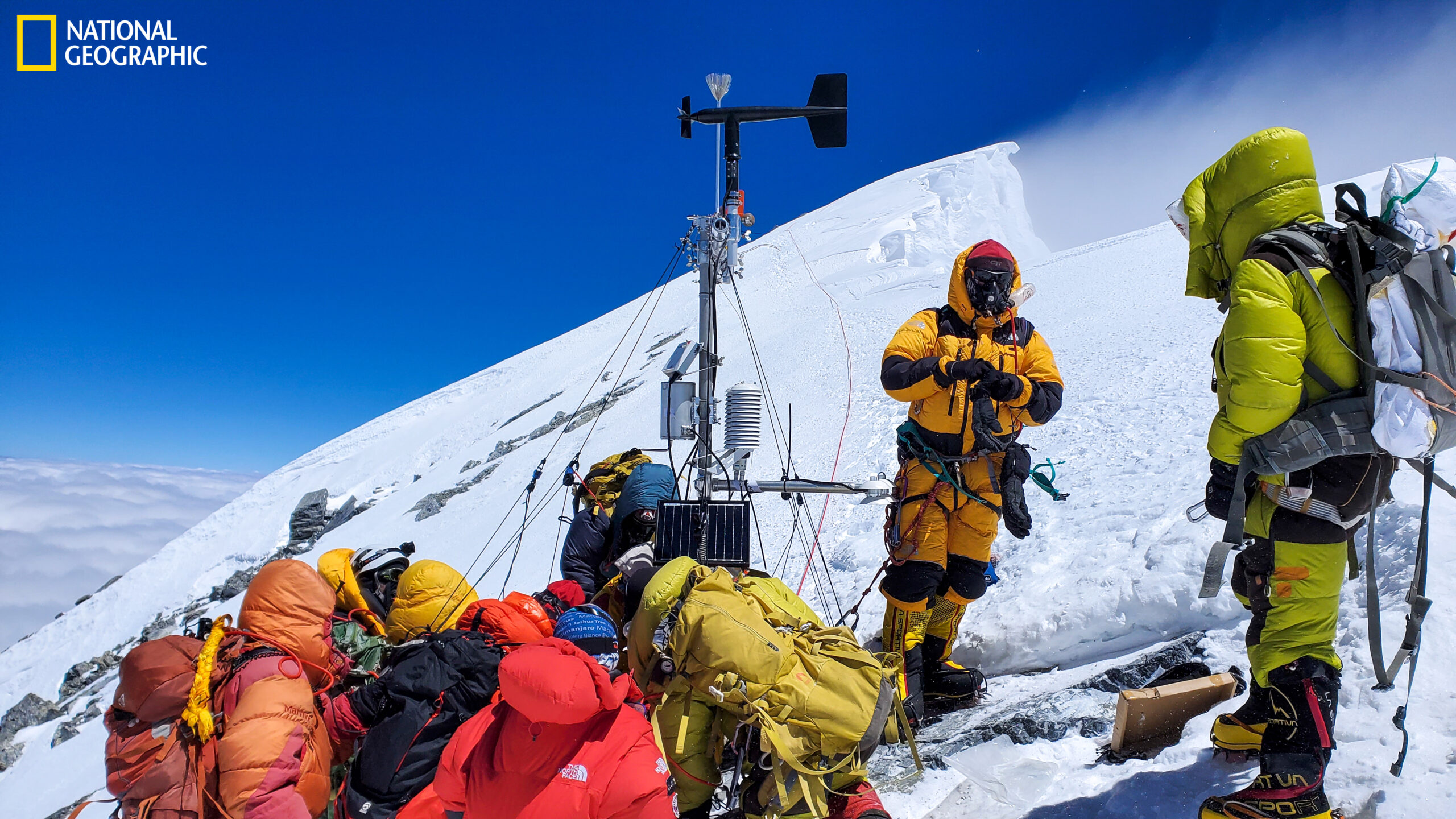
“I stayed at Camp II, coordinated communications and freed up resources to allow our Sherpa team to have the best chance of success,” said Dr. Perry.
The achievements of the Perpetual Planet Everest expeditions have already brought to the fore a series of far reaching insights: unlocking mysteries in one of the most extreme-yet-unique environments. The findings are crucial for holistic well-being of the Hindu Kush Himalayan region and beyond in general.
Some of the findings following extensive analyses, comparisons with past data, and modelling based on samples and meteorological data collected after the first expedition in 2019 have already been published and they forewarn us of the impending consequences of climate change on Mount Everest’s glacial bodies and rippling effects downstream.
The team had been able to retrieve ice core sample going deep 1,000 centimeters from the surface at South Col Glacier (8020m). The ice core sample had average density of about 0.89 gm/cm3, which translated into nearly 30–50m thickness.
Radiocarbon dating of the upper 10–69 centimeters of the ice core revealed an age of roughly 2,000 years (1966 ± 179 years ago). Further scientific work on the ice core showed that around 27 millimeters of ice accumulated each year on the South Col Glacier (8020m).
Taking that 27mm annual ice deposition as average for the past 2,000 years and verifying the same with the ice core’s near-surface age (relatively contemporary), scientists modeled that the glacier had lost a notable amount of ice i.e. about 55 meters in thickness.
When compared with similar analysis done with East Rongbuk Glacier (6,518m) lying five kilometer north of South Col Glacier, researchers have reason to believe that their calculation of 55m ice loss is reasonable.
A paper titled “Mt. Everest’s highest glacier is a sentinel for accelerating ice loss” published in the Climate and Atmospheric Research portfolio of the journal “Nature” on February 3, 2022, has documented the above mentioned finding.
The finding warns all and sundry: if the trend of erosion of the world’s highest glacier continues, it would wreak havoc in the region and drastically affect and alter climate beyond the region.
Moreover, further investigations suggested that 55m of ice from the highest glacier system could have largely vanished in the past 30 years. It is a warning bell that amazing vistas of the mountains could be lost forever by the next century, if not sooner.
A cutting-edge climate reanalysis of the weather pattern going back to 1950s also demonstrated that global warming in Asia intensified since 1980s, and comparisons of the periods from 1980s to 2000s and from 2000s to 2020s magnified the fact that temperature rise across Asia has been rapid — nearing two degrees — in the past twenty years period.
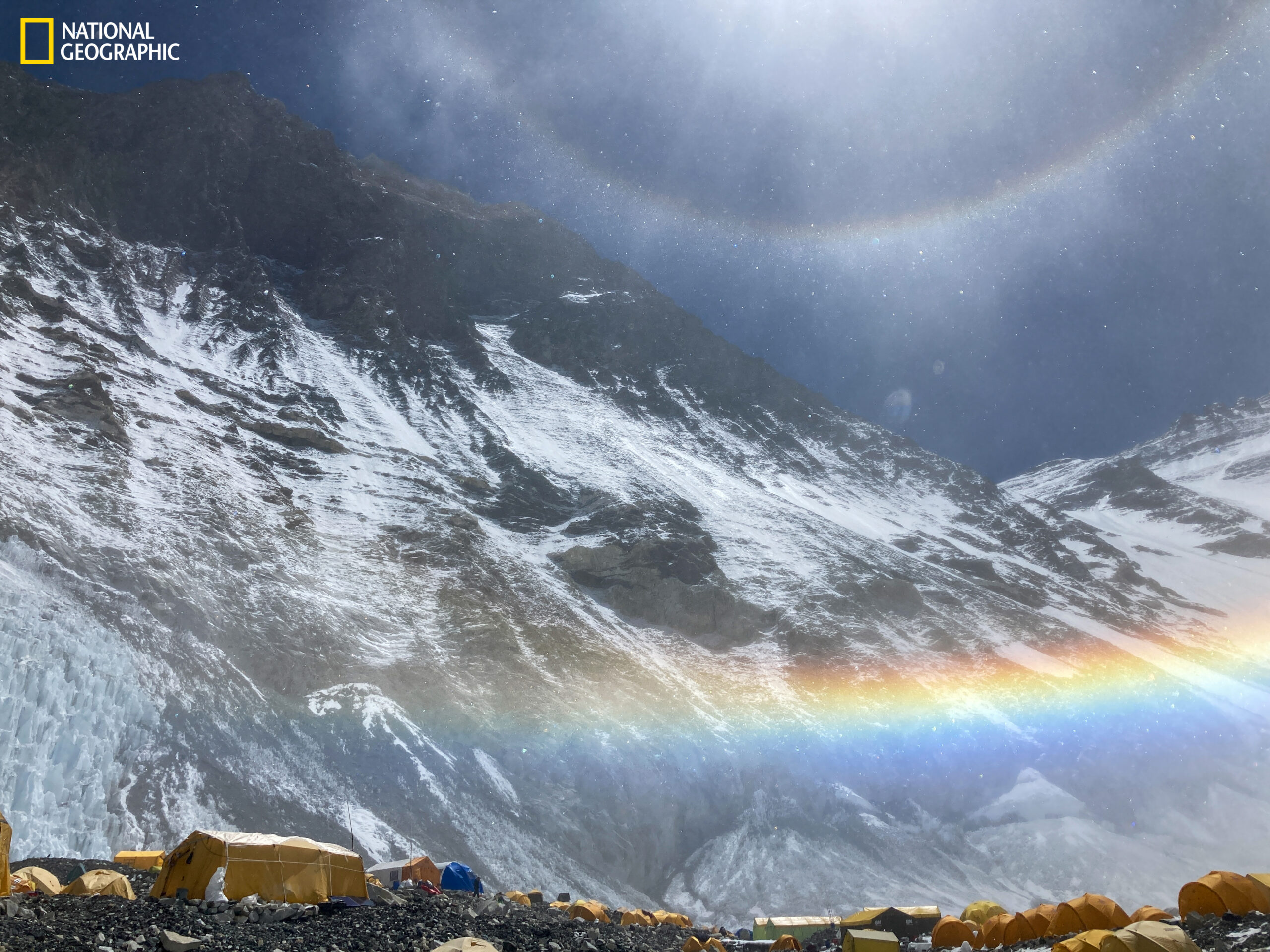
Though global warming is undeniable, one should also not jump to conclusions that glacial ice and snow was solely lost due to the gradual warming of the planet. It is equally important to note other process involved and put the idea to test.
Glaciers are formed over thousands of years through accumulation of snow, which gradually compresses into ice, and moves below the surface to form the glacial body. Meanwhile, loss of snow and ice also occurs naturally and the same is referred to as ablation in scientific terms.
While glacial accumulation takes place mainly through direct precipitation; melting, sublimation and evaporation largely drive ablation. Dry winds sweeping away surface snow serve both accumulation and ablation.
Himalayas lie in the upper parts of the troposphere where most of Earth’s weather takes place and are mostly exposed to direct radiations from the sun. Taking into account heat-related natural processes is just as essential while studying glaciers; something that might have been missed till date.
To measure and understand parameters and characteristics of precipitation, melt, sublimation and solar radiation, the weather stations fitted into the larger picture and provided a rather corrected analysis behind the retreat of the world’s highest glacier originating from the highest mountain Everest and glacier systems elsewhere.
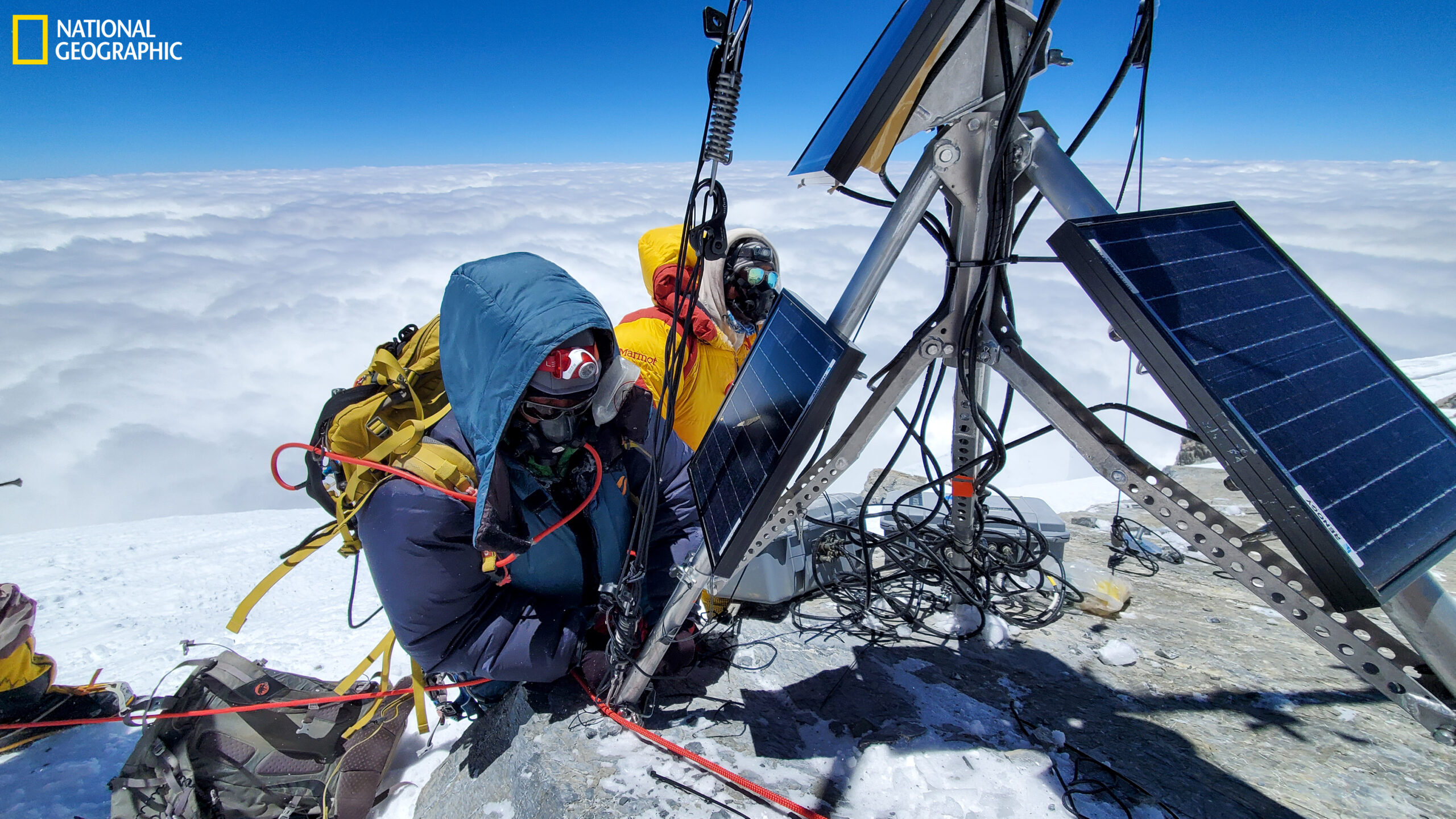
According to Dr. Perry, “Intensity of incoming solar radiation or sunshine is really phenomenal on Everest. When the sun comes up, it is very warm; it can be, especially, when you get away from the wind. But, we never really had direct observations of that solar radiation until we installed the weather stations in 2019.”
He continued: “What our data have shown is: at times, the measured values of solar radiation at South Col (7,945m) was higher than the top of the atmosphere.”
South Col (7,945m) was the the highest spot where radiation sensors had been mounted to the weather station.
“And that was because…(what we think is) because of the multiple reflections that come in from the clouds, snow surfaces, from Lohtse and also from higher areas on Everest. The multiple reflections create this really intense solar radiations there,” added Dr. Perry, who himself seemed to be taken aback while explaining this.
He simultaneously noted, “There is not much atmosphere above us there anyway. Nevertheless, it (solar radiation) is really intense up there.”
“So, there is reason to believe that the Bishop Rock station that our team just installed (in 2022) maybe the sunniest place in the world. And we’ll need a full year’s data to really say that, but that’s a really important finding.”
Further signifying the importance of solar radiation findings, he linked the intense solar radiations readings on Everest to the melting of glacial surface at temperatures well below freezing at such extreme altitudes.
“In the initial period of observation, temperature at South Col (7,945m) and Bishop Rock (8,810m) reached up to -10° Celsius and at times got a little warmer but they do not approach, they never approach freezing with the air temperature. However, because of the intensity of that incoming solar radiation, there can be melt occurring at the surface even when air temperature is -10° Celsius. It is a really important finding that melt can occur, even up, likely to the summit even when temperatures are well below freezing point.”
Dr. Perry further added, “And again, we still need to analyze the Bishop Rock station and the recent data that are coming in to seal this confirmation. But, we know from the Balcony and the South Col that melt can occur at temperatures well below freezing.”
According to Dr. Perry, a lot of the glacier mass balance and behavior models used in the past and present don’t necessarily factor in this scenario where melt can be occurring at air temperatures well below freezing.
Solar radiation contributing to melting at extreme altitudes had not been thought-of in the past scientifically and the finding prompts revisions of all past works carried out on high altitude glaciers.
Another stark finding, according to Dr. Perry, is that a lot of snow and ice is being lost through sublimation (direct conversion of solid state to gaseous state) by skipping the melting process (liquid state) on upper reaches of Everest.
“Even at temperatures -40° Celsius, a lot of snow and ice could be lost because of very dry air and just very strong winds. This was somewhat a surprising finding that the weather stations really were critical in helping us understand,” he said.
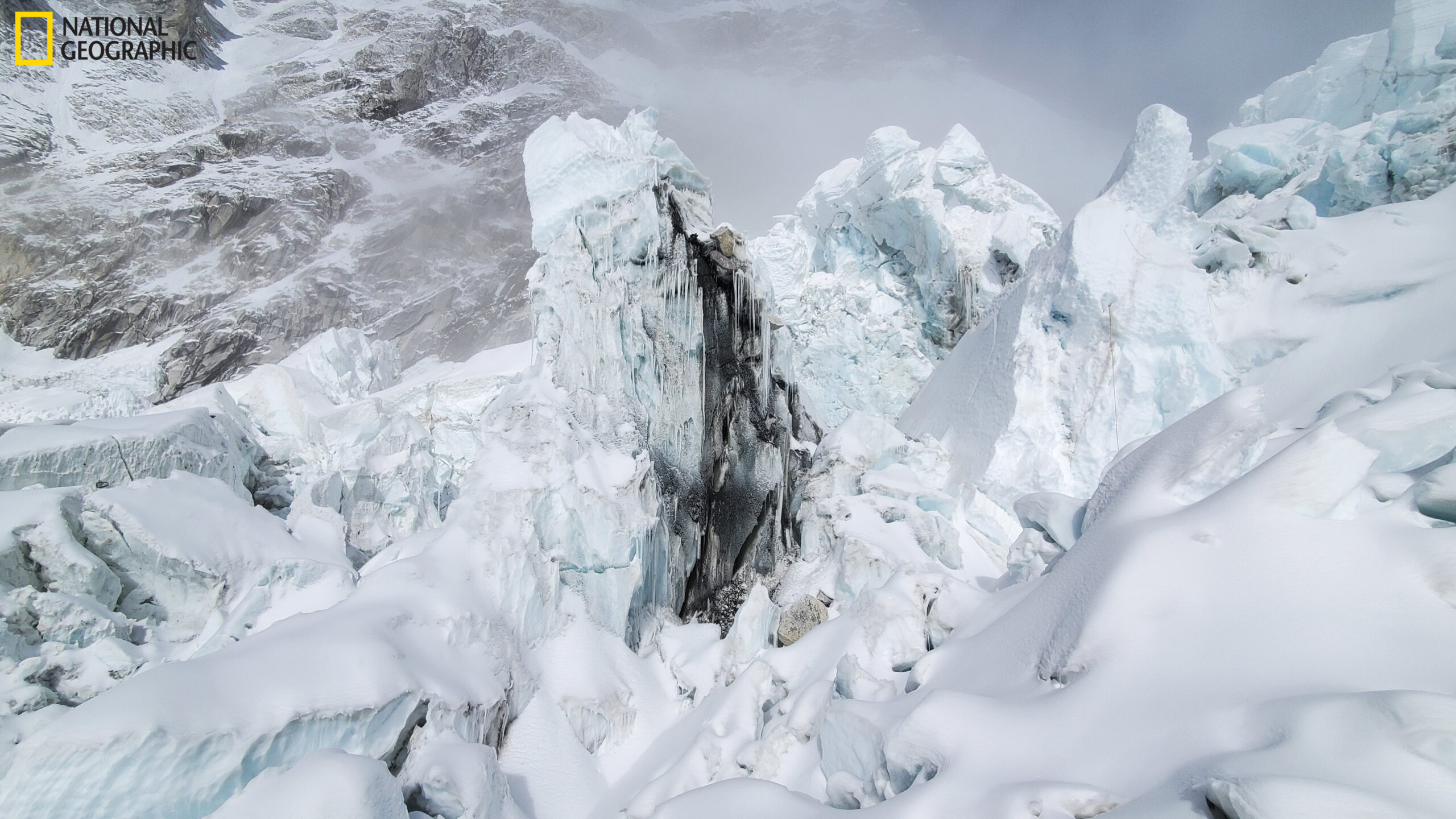
The world’s highest weather station at 8,810m is uniquely positioned to monitor weather and climate in the Himalayas and beyond, noted another paper submitted by the expedition’s scientific crew: “Going to Extremes: Installing the World’s Highest Weather Stations on Mount Everest” – published in American Meteorological Society journal on November 1, 2020.
Combining global warming data and directly observed weather variables on Everest, climate scientists are empowered to reconsider established assumptions, and recommend slight corrections that in turn significantly improve weather forecast models practiced till date as well.
“Improving future weather forecast based on data from meteorological stations was one of the long-term objectives of the expedition,” said Khadka.
The recent 2022 expedition itself had to suffer as a result of unreliable forecast reports.
The team had initially planned to install the station at Bishop Rock on May 10, 2022, based on weather forecast reports, and progressed accordingly. However, as they began their journey aided by initial forecast reports, they received another set of data telling them that their planned day for installation would not be favorable at all.
According to Khadka, he along with Dr. Matthews and team of Sherpas improvised and skipped stay at Camp III on May 8 to rush to the Bishop Rock (8,810m) on May 9 to increase their chances of success following the changing forecast data.
As the saying goes fortune favors the brave, the team’s quick-move stacked against enduring physical challenges ultimately accomplished the mission. They had placed a new and improved weather station at the highest altitude possible, Bishop Rock (8,810m).
After dusting off the task of installation of the world’s highest weather station at 8,810m, the team then conquered the summit in 2022 – something circumstances did not allow them in 2019.
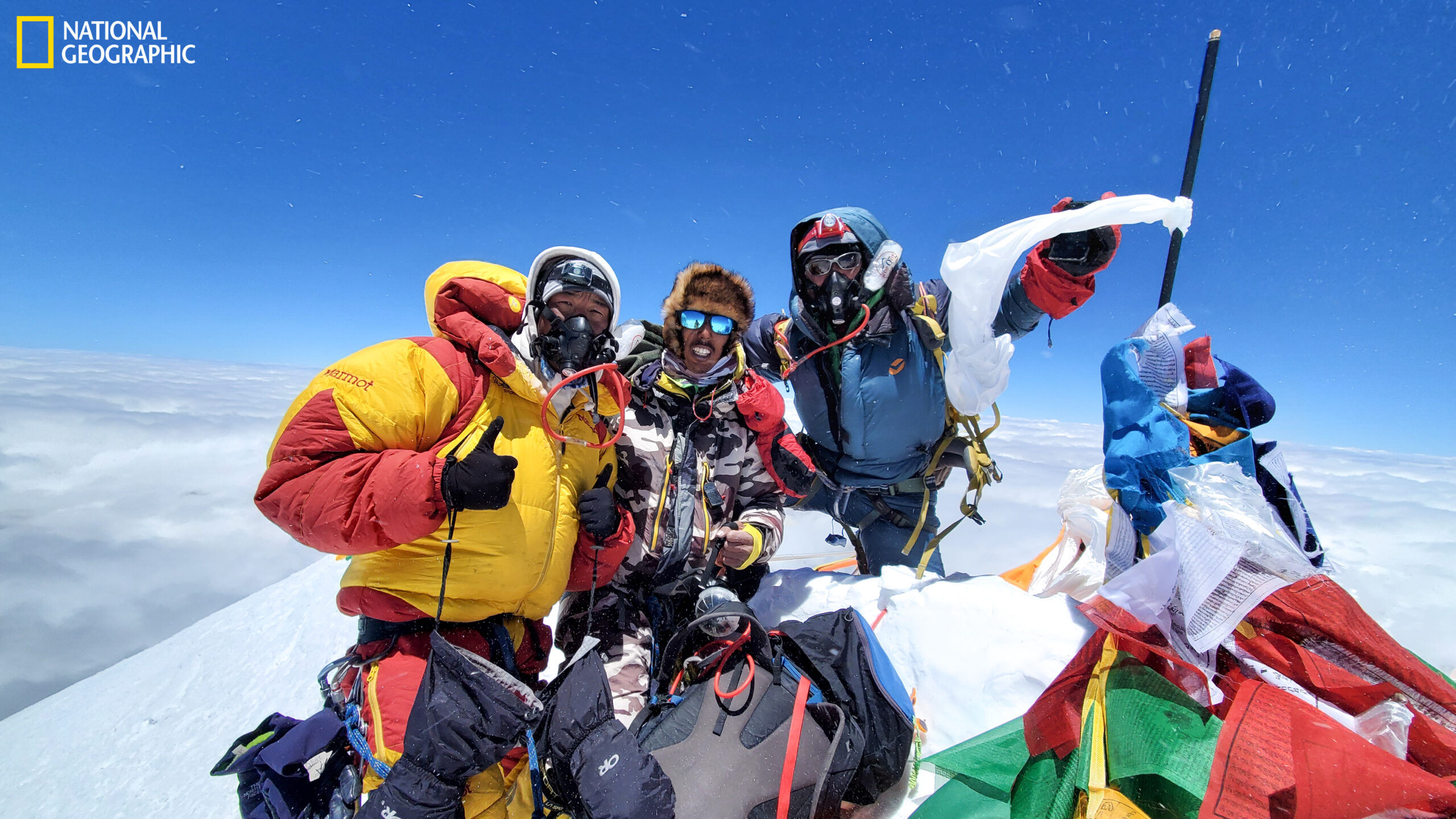
The fatigue after the mission also subsided as the weather stations ushered new excitement. In the days that followed the installation, the weather station so laboriously installed at Earth’s highest possible elevation picked up subtropical jet streams — another unprecedented yet anticipated readings scientists now have their hands on.
“Jet streams are extreme winds found only between 8,000m and 16,000m blowing always from West to East with minimum speeds crossing over 100km/hour,” explained Khadka, who was visibly excited about the jet steam data.
The installation of the world’s highest weather system encountering tropical jet streams will further shed more light into climate patterns across the globe. These jet streams determine precipitation to weather ranging from Everest to sub-tropical belt of Earth, affecting planting and cultivation as well.
Dr. Perry also attributed the disappearance of climbers to these extreme high-powered jet streams and local winds that develop instantly on Everest. The mountain has been devouring climbers every year and not all make it back all the time. In this context too, the weather stations are helping scientists understand the formation of instant local gusts that could have been the reason of death and disappearance of many climbers till date.
Nonetheless, maintaining the systems at an extreme environment is still a tall order on Everest. Installation was first achieved in 2019 and again in 2022, but maintaining these staying on Everest for as long possible requires another level of commitment.
The first expedition was successful in fixing the weather station in their first attempt; however, local gusts of strong winds and extreme cold temperatures had caused the station to fail; thereby, necessitating the need of second expedition in 2022.
In addition, 2019 was also the year that saw crowding and traffic jams on Everest. The same had also hindered the first expedition’s initial aim of fixing the weather station at a much higher elevation, just few vertical meters below the summit. The first expedition had settled for the Balcony location after foreseeing crowding would further aggravate logistics.
Notwithstanding the challenges posed by adverse weather, crowding, “cold batteries that had to be warmed up (consuming precious time) to operate the drills to fix the weather station and the missing mounts (pipe sections) of the wind sensors”, the team had been successful in completing the objective of installing the station at Balcony in 2019 as well. Then the Balcony station made record of being the world’s highest weather station.
The Balcony station, however, went kaput on January 20, 2020, seven months after its installation.
“At the South Col, sensors had been damaged. We knew that. But we weren’t completely sure what had happened at the Balcony. Later, we came to learn that its (the Balcony station) anchors had failed and the tripod was on its side. So, we needed to replace that (Balcony) station,” Dr. Berry said.
All the while, the lower stations were perfectly doing their jobs. Even the seven months data transmitted by the Balcony station enabled the scientific crew to peer into climate situation on Everest.
With combined data from all stations, they established facts such as Bay of Bengal serves as the major moisture source for Khumbu region while also recording annual warmest and coldest days on Everest, among others.
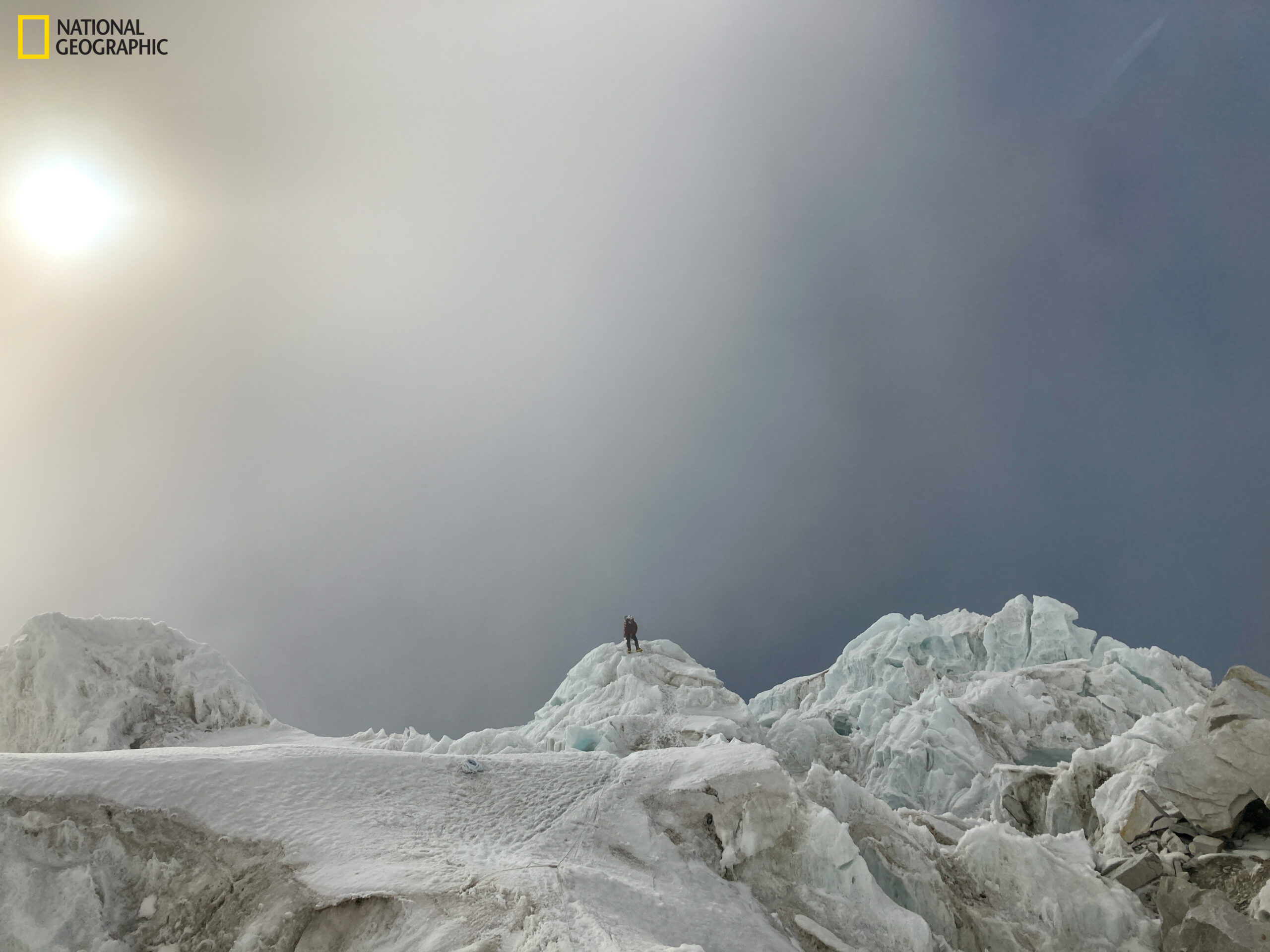
2020 was the year of COVID-19 and Mt Everest largely remained closed for pretty much everyone. Therefore, the repair work on the Balcony and South Col stations could not take place.
Tenzing Gyalzen could only tend to those stations in 2021. He and Lhakpa Gyalzen Sherpa, just the two of them, climbed Everest to conduct maintenance on the stations in 2021 as the government of Nepal reopened Everest for expeditions.
They (Tenzing Gyalzen and Lhakpa Gyalzen) replaced sensors at Camp II station and battery at South Col station during 2021 ascent. They also picked up some damaged parts of the Balcony station and brought them down.
Another important task Tenzing and Lhakpa had been entrusted with in 2021 was scouting a new location for placing a new and improved weather station. In the course of scouting, they deemed Bishop Rock as a more sturdy place for the new station that was to be taken up there in 2022.
The team of Sherpas had trained extensively with the scientific crew during the Perpetual Planet Everest Expedition for network installation of weather stations and management.
They are to ascent Everest again if any technical issues erupt on the weather stations or one of its parts is to be replaced.
Dr. Perry said, “Tenzing Gyalzen is right there at Phortse and it is much easier for him to access and maintain the stations instead of someone from the US or even Kathmandu going to Everest.”
While the existing weather stations have already begun to significantly contribute to expand the body of knowledge scientists had till date, it seems as if it is only a beginning as more and more data from the weather stations is anticipated in the long run.
The data collected in the long run is more than likely to help address concerns such as changes to local and regional climate, water resources, and the impact of evolving climatic conditions on the population of plants, insects, wildlife and humans living under the shade of Himalayas in future through science-informed decision-making process.


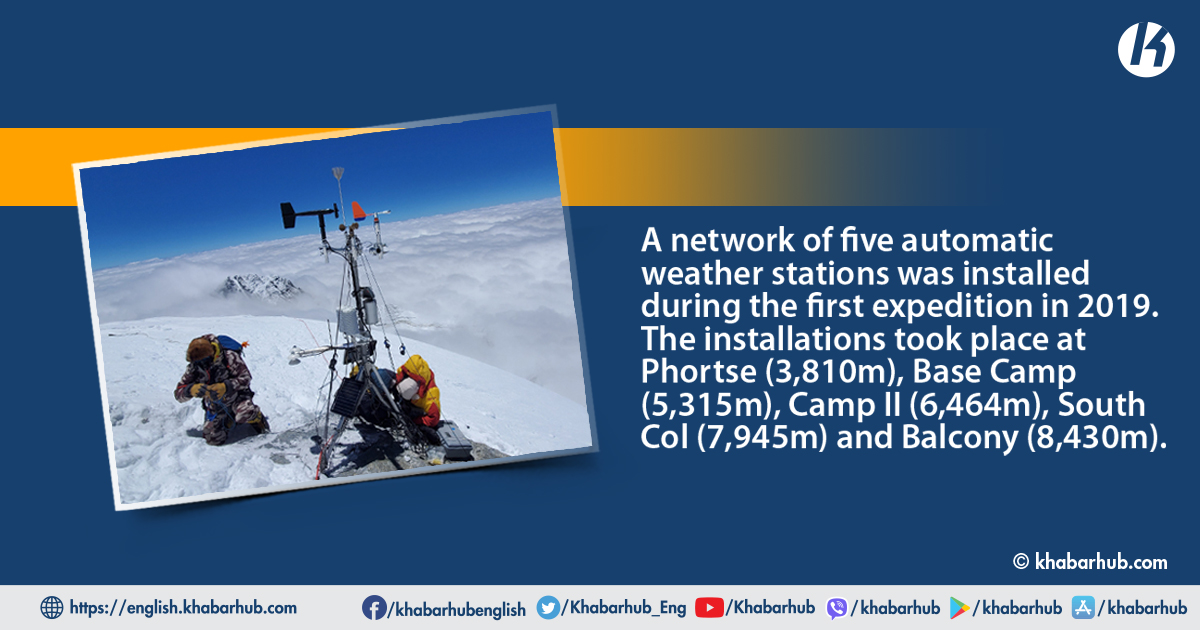






Comment